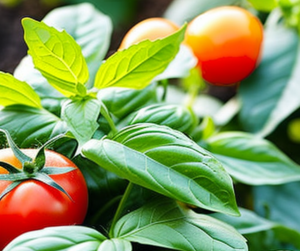Gardening is a beautiful hobby that requires a certain amount of knowledge, patience, and love for nature. One of the most critical aspects of gardening is companion planting, which involves planting different species of plants together to benefit both. This article will delve into companion planting and learn about the benefits, techniques, and best plant combinations for optimal garden success.
What is Companion Planting?
Companion planting is planting different species of plants near each other to achieve maximum growth and health. Gardeners and farmers have used this method for centuries, and it is based on the idea that certain plants can enhance the growth and health of other plants when grown together.

The Benefits of Companion Planting
There are many benefits to companion planting, including:
- Pest Control: Certain plants can repel pests and protect others from damage. For example, planting marigolds near tomatoes can help keep tomato hornworms away.
- Improved Soil Quality: Some plants, such as legumes, are known to fix nitrogen in the soil, improving soil quality and benefiting other nearby plants.
- Increased Yields: Companion planting can increase yields as plants grow in a more supportive environment. For example, planting beans and corn together can increase profits for both crops.
- Reduced Space: Companion planting can also save space in the garden as multiple crops can be grown in the same area.
Techniques for Companion Planting
Gardeners can use a few techniques to achieve optimal success with companion planting. Some of these techniques include:
- Intercropping: This involves planting two or more crops in the same area, with each crop occupying a different layer of the soil. For example, planting lettuce under taller plants like tomatoes can save space and provide shade for the lettuce.
- Succession Planting: This involves planting different crops in the same area over time, with each crop taking advantage of the nutrients left behind by the previous crop.
- Planting in Guilds: This involves producing a combination of plants that have mutually beneficial relationships in a single area, such as planting fruit trees with nitrogen-fixing plants, pollinator-friendly plants, and pest-repelling plants.
Best Plant Combinations for Companion Planting
Many different plant combinations can be used for companion planting. Some of the best varieties include:
- Tomatoes and Basil: Tomatoes and basil have a symbiotic relationship, with basil helping to repel pests and improve the flavour of the tomatoes.
- Carrots and Onions: Carrots and onions can be planted together as they both repel pests and improve the growth of each other.
- Squash and Corn: Squash and corn can be planted together as the large leaves of the squash provide shade for the soil, helping to conserve moisture and reduce weeds.
- Beans and Peas: Beans and peas can be planted together as they both fix nitrogen in the soil, improving soil quality and benefiting each other’s growth.
- Marigolds and Vegetables: Marigolds can repel pests and be planted near vegetables to protect them from damage. Marigolds also produce toxic chemicals for some problems, making them a natural pest control solution.
FAQs on Companion Planting
How far apart should companion plants be planted?
It depends on the size of the plants and the space available in the garden. Generally, smaller plants can be planted closer together, while larger plants should be spaced further apart.
Can companion planting be done in containers?
Yes, companion planting can be done in containers and traditional garden beds.
What plants should not be planted together?
Some plants should not be planted together as they can hurt each other’s growth. For example, members of the nightshade family, such as tomatoes, peppers, and eggplants, should not be planted near members of the solanaceous family, such as potatoes.
Is companion planting the same as intercropping?
Companion planting and intercropping are related but not the same. Intercropping involves planting two or more crops in the same area, with each crop occupying a different layer of the soil. Companion planting involves planting other species of plants together to benefit both.
Can companion planting be done in all climates?
Yes, companion planting can be done in all climates, but the specific plant combinations may vary depending on the environment and growing conditions.
In conclusion, companion planting is a valuable technique for gardeners and farmers to achieve optimal plant growth and health. By using the methods and best plant combinations outlined in this article, you can enhance the success of your garden and reap the many benefits of companion planting.


